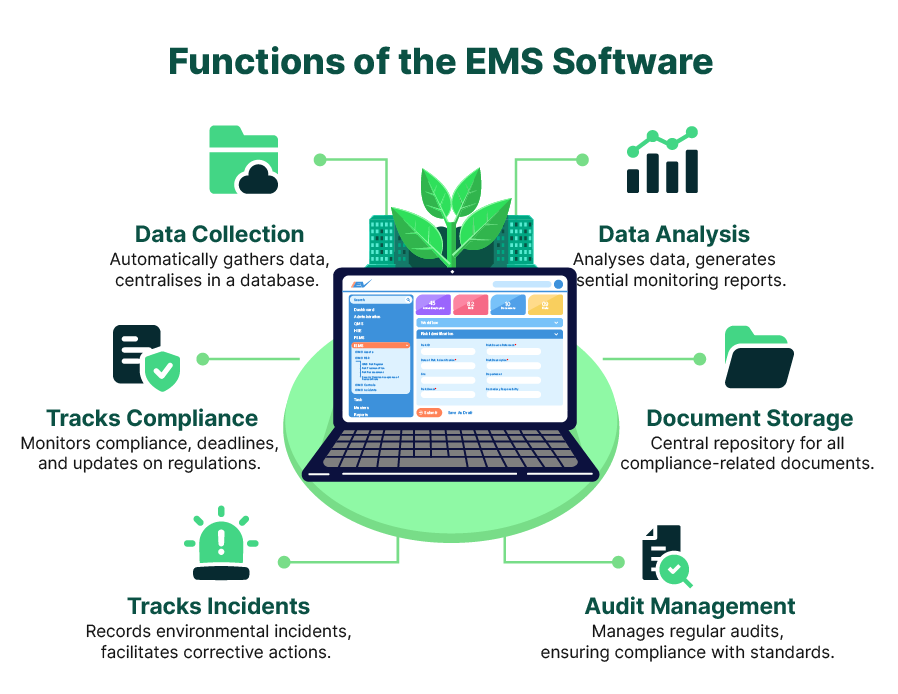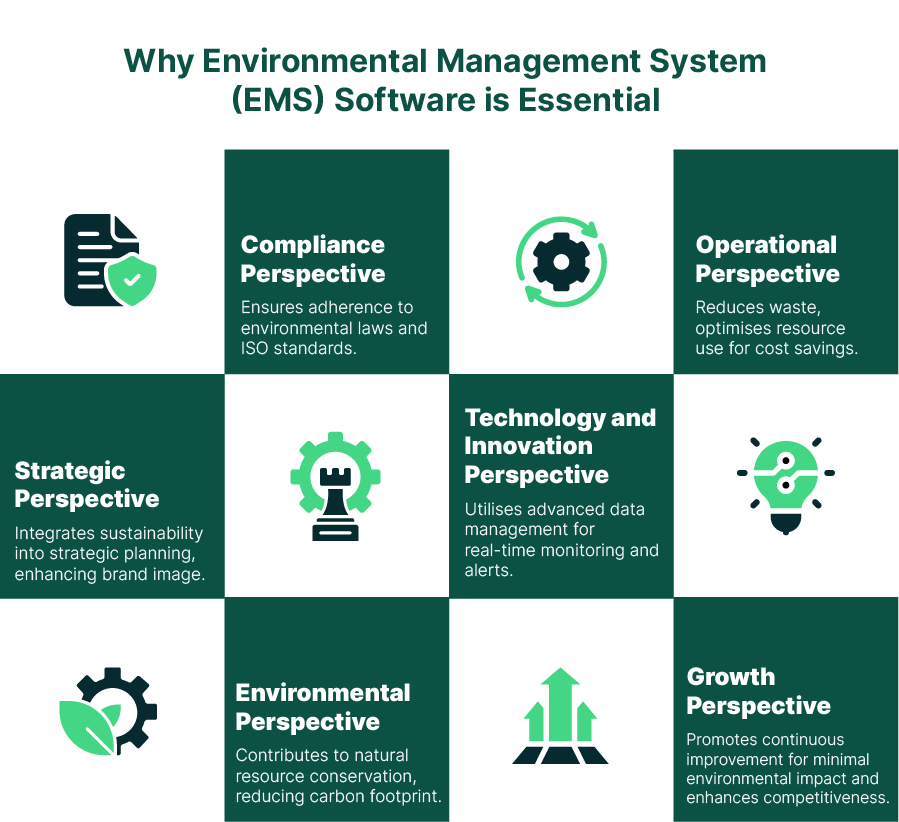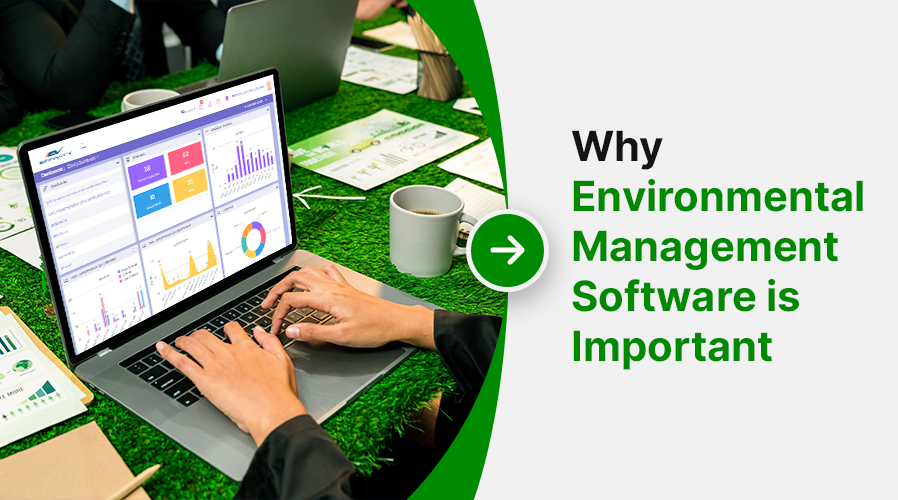Imagine a manufacturing company that is facing increasing pressure from its customers and the community to demonstrate its commitment to environmental sustainability. Despite earnest efforts, it fails to reduce its environmental impacts, such as its carbon footprint. The failure could be a result of relying on manual processes to track ecological implications. This shortcoming has led to inefficiencies and hefty regulatory fines for the company.
In this scenario, if the company had a centralised and automated system to handle all its environmental policy documentation, report incidents, alert renewals and deadlines and conduct detailed data analysis, it could have effectively managed these challenges. It is best to consider implementing Environmental Management System (EMS) software in situations like this. EMS is essential for every organisation trying to streamline its environmental initiatives. This article explores why organisations today cannot avoid EMS software and how it makes environmental management more accessible.
What is Environment Management System Software?
An Environmental Management System EMS Software is a digital platform that can help your organisation manage environmental impacts and comply with regulations. Businesses are expected to implement sustainable practices. These practices include tracking emissions, managing wastes, and conserving resources. All sustainability efforts must comply with local and international laws related to environmental conservation.
The EMS software gives you a framework to manage sustainability tasks with the help of data management, tracking compliance, reporting incidents, and analysing performance. This framework helps your organisation reduce its environmental impact systematically.
How Does EMS Software Work?
An EMS Environmental Management System software performs the following functions to serve as a tool to help your organisation manage environmental programs and comply with regulations:

1.Data Collection: The EMS software automatically collects data from various organisational sources and manages a central database.
2.Data Analysis: The software performs various analytical tasks based on the collected data and generates internal and external monitoring reports.
3.Tracks Compliance: It tracks the compliance status of your organisation, keeps an account of deadlines and renewals, and is updated with the latest environmental regulations and standards.
4.Document Storage:The EMS software is a repository for all environment and compliance-related documentation. It ensures that documents are easily accessible when needed.
5.Tracks Incidents: When an incident in the organisation impacts the environment, the software records it. It also facilitates the application of corrective measures and emergency plans to resolve the issues.
6.Audit Management: The EMS Software keeps track of audits and inspections to ensure they are conducted at regular intervals in compliance with standards such as ISO 14001 and other regulations. The software keeps track of these audits and their findings.
Why is Environmental Management System Software Important?

An Environmental Management System software can transform how your organisation deals with environmental impact issues. Here's why you should consider implementing EMS software and why it is important from various perspectives:
1. Compliance Perspective
EMS software assists your organisation in staying compliant with environmental laws and regulations. It helps you keep track of relevant laws, manage your permits, and ensure all requirements are met. It is also necessary to maintain a well-functioning EMS to ensure your organisation complies with ISO standards.
The EMS software also helps you gather, manage, and analyse environmental data. This aspect makes conducting audits and creating reports for regulatory bodies easier.
2. Operational Perspective
A significant part of managing your organisation's environmental impact involves reducing waste by optimising how resources are used. This optimisation helps you achieve operational efficiency, which in turn increases cost savings.
Environmental risks and hazards can lead to costly incidents and liabilities. EMS software identifies and manages risks and puts in place emergency plans in case of incidents. This environmental planning helps you avoid costly mistakes in terms of your environmental system management.
3. Strategic Perspective
EMS software supports the integration of environmental sustainability into strategic planning. This means it helps your organisation meet sustainability goals and improve environmental performance. In the modern world, heavy emphasis is placed on environmental system management. With EMS software in place, your organisation demonstrates its commitment to sustainability, which can boost your brand image and reputation.
Additionally, from the strategic perspective, EMS software lets you communicate transparently with stakeholders regarding environmental performance. Investors often use sustainability to assess if your organisation is viable in the long term. EMS Software keeps track of recent sustainability metrics that provide reliable data to investors. It also keeps employees engaged in environmental initiatives.
4. Technology and Innovation Perspective
Advanced EMS software is designed to collect and manage large sets of data. This data can then be integrated into other management systems like QMS, for example, to generate a more holistic view of your company's performance.
Technological advancements in system software now facilitate real-time monitoring and alerts to help generate immediate responses to potential issues and prevent environmental incidents.Additionally, the quest for minimising environmental impact often leads to innovation. Such innovation can help you meet emerging market demand for sustainable products and services.
5. Environmental Perspective
By managing and reducing energy, water, and material usage, EMS software contributes to the conservation of natural resources. This can help your organisation become more sustainable and environmentally aware, which is an ethical concern for many stakeholders.
6. Growth Perspective
Implementing EMS software means continuously improving various processes to ensure the least environmental impact. It also helps your organisation be competitive in the market by differentiating itself as an environmentally responsible company.
Final Thoughts
Setting up an environmental management system software can help you improve various processes and comply with standards. However, for successful implementation, your software must integrate smoothly with existing systems and be easy to adapt to. This is where Effivity comes in with the innovative EMS Software.
Effivity's EMS Software is designed to keep the latest regulatory requirements and standards in mind. Additionally, it comes with an easy-to-use drag-and-drop interface, cloud integration and a fail-proof security system. It also fits perfectly into existing organisational systems and improves operational efficiency.
To try Effivity's EMS Software, contact our team today to set up a consultation and a free trial!






























